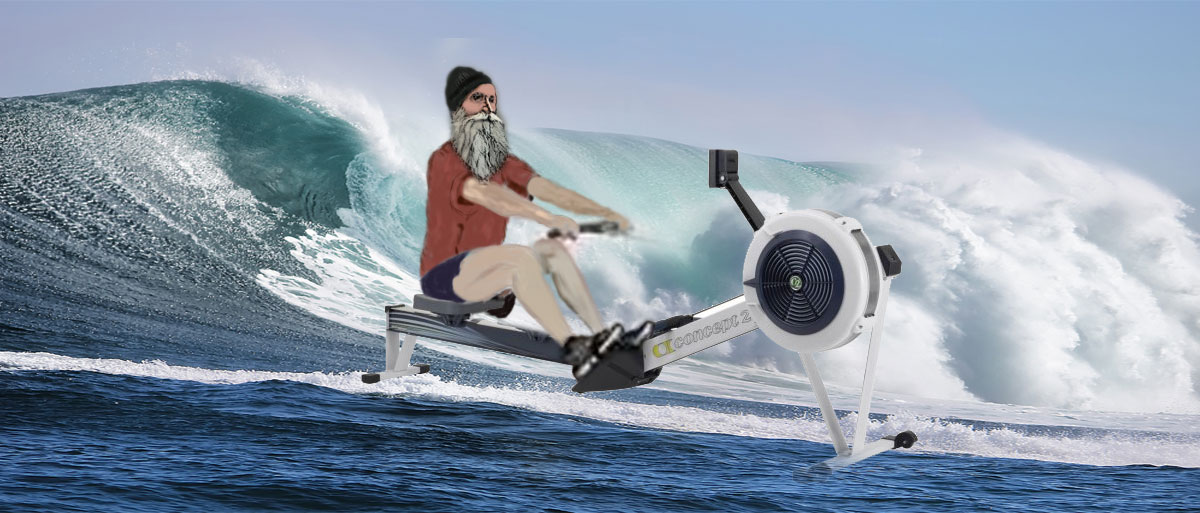
Total distance rowed today was a little more than 8,000 meters. The main piece was 30 minutes, with a goal of staying as near as possible to 130 BPM. The 30 minute session was done online, but the other two guys who had signed up for it didn’t show up so I rowed it alone.
That heart rate target was chosen as a result of reading a passage in a book titled “The Big Book of Endurance Training and Racing,” by Dr. Philip Maffetone. He writes extensively about heart rate training and recommends doing all workouts in what might be called the heart rate sweet spot. He doesn’t call it that. He calls it something like the “aerobic heart rate zone” and has a formula called The 180 Formula for calculating that HR zone.
I’m sure the formula works well for the people with whom he worked, who were mostly if not all probably 40 years old or younger. I’m guessing about the assumption I made in the previous sentence.
But when I applied the formula to myself, using what he calls an “honest assessment” the result is 124 BPM. That seems quite a bit too low. It’s definitely not “hard” rowing or even “medium” hard.
So I thought about it and modified it further, using my own method which doesn’t have a name. So I will pause the typing, and think about it…
Okay, I didn’t come up with a name for it. But my method is to modify Dr. Maffetone’s 180 Formula by using a value for age arrived at after using the 220 formula in reverse, to solve for an “age value” based on a person’s maximum heart rate or the best guess as to a person’s maximum heart rate.
The 220 formula assumes that a person’s maximum heart rate = 220-x, where x = a person’s age in years.
But the 220 formula is based on the assumption that a person is completely sedentary and that the person’s HRmax decreases by 1 BPM per year.
And though Dr. Maffetone uses 180 instead of 220 in his approach, he also assumes that a person’s maximum HR decreases every year, though his approach seems to assume that it decreases by LESS than 1 BPM per year.
The unknown amount of decrease in maximum HR every year seems to be the problem. I’ve read that if a person is “active” instead of sedentary during any years of life, that person’s maximum HR will not decrease during those years. So for every year during which I was “active” every day of the year, my maximum HR did not decrease that year. You can save me a lot of writing by thinking about that on your own.
So … if my maximum heart rate were, say, 180, then my “age” in years according to the 220 formula would be 220-180 = 40 years old and that would represent 40 years of non-sedentary life.
I don’t actually know what my maximum heart rate is. The highest I’ve seen it go was 191 and that was 8 or 10 years ago. The day before yesterday, when I rowed at a medium hard effort level for 30 minutes, it went as high as 176 before I slowed down during the last 20 seconds. I was not breathing hard, so I assume it would have gone higher, to somewhere above 180 but probably less than 191, if I had continued to sprint for all of the last 20 seconds… which would have resulted in me breathing hard and possibly even starting to “gasp” or “wheeze” for breath. (The reason I slowed down from a sprint two days ago and rowed at a very easy pace during those last 20 seconds is because I didn’t want to get to the point of needing to breathe really hard, etc)
So I used 180 as the HRmax value in the 220 formula when “solving for age” and then used the value of 40 instead of my chronological age of 71 in Dr. Maffetone’s 180 Formula, which resulted in a value of 130 for “maximum aerobic heart rate” target. If I had assumed and used 190 instead of 180 as my current HRmax, the Maffetone 180 formula result for me would have been 140.
I thought 130 was a safe and conservative value as the target and tried to adjust effort level to keep the HR graph as “flat” as possible near the value of 130 while being very happy to have an imperfect, wiggly, more or less horizontal line.
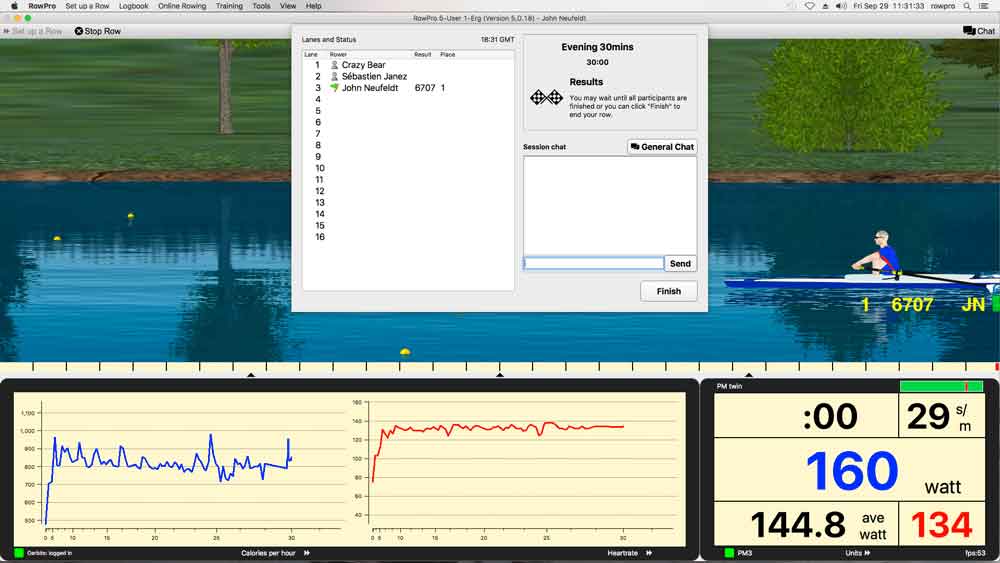
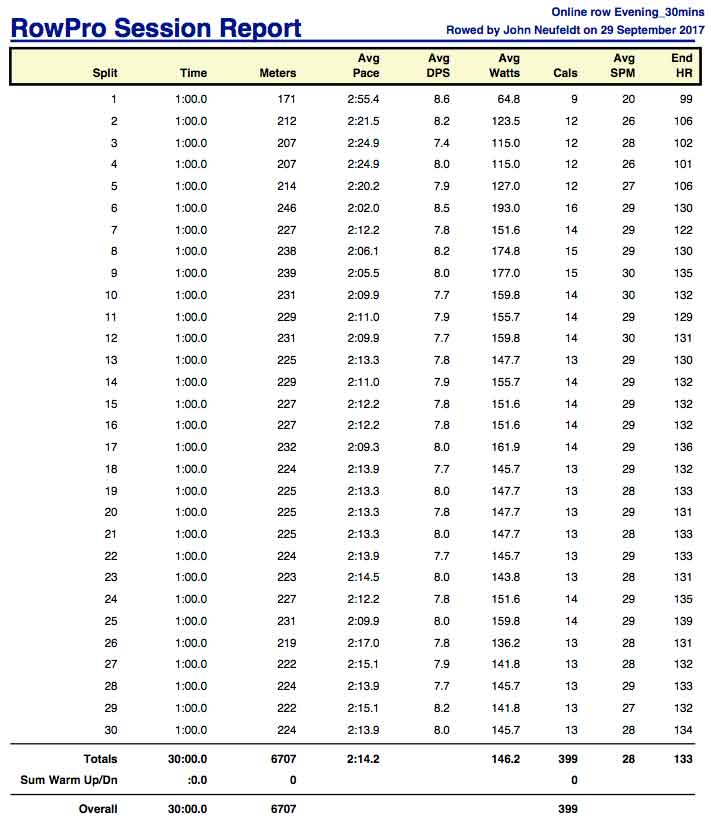
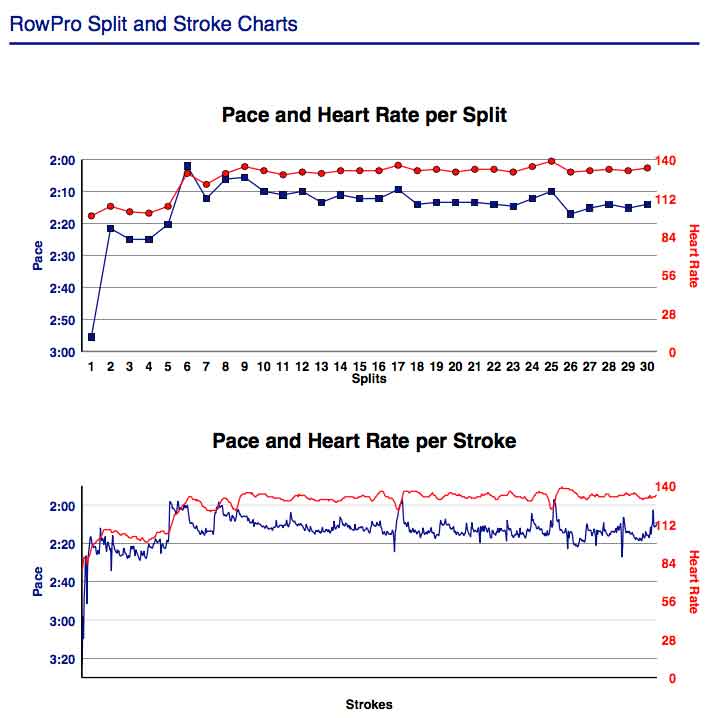
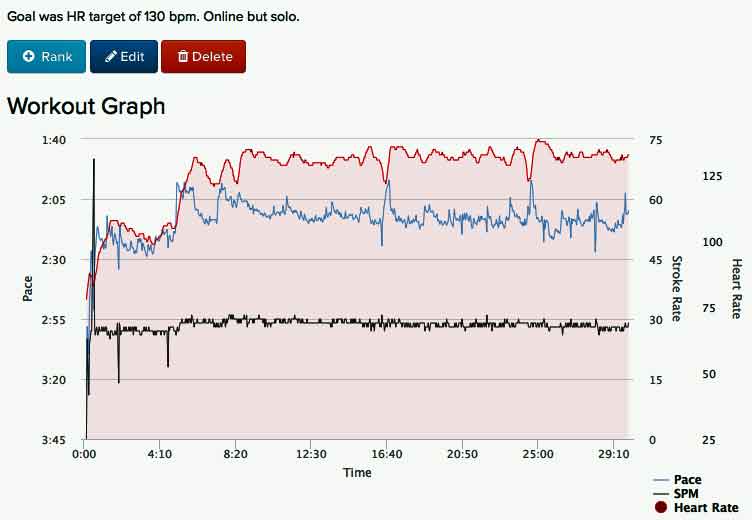
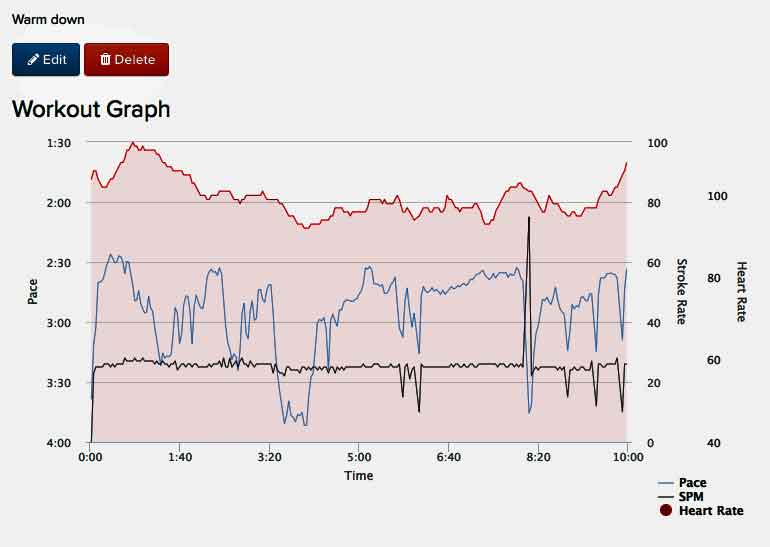
Happy heart zone targeting while rowing to you.
